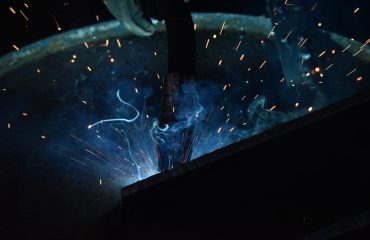body {
font-family: sans-serif;
line-height: 1.6;
}
h1, h2, h3 {
color: #333;
}
h1 {
font-size: 2.5em;
}
h2 {
font-size: 2em;
}
h3 {
font-size: 1.5em;
}
The European Union’s CE marking is not just a logo; it’s a passport to the vast European market for steel products. This comprehensive guide will unravel the intricacies of CE certification for steel, helping you understand the process, requirements, and benefits of obtaining this crucial mark.
Understanding the CE Marking for Steel Products
The CE marking signifies that a product conforms to all applicable EU health, safety, and environmental protection legislation. For steel products, this often involves directives related to construction products (Construction Products Regulation – CPR), machinery directives, and potentially others depending on the specific application of the steel. It’s not a quality mark in itself, but a declaration of conformity with essential requirements. This means manufacturers must demonstrate that their steel products meet specific performance standards before affixing the CE mark.
Key Directives and Regulations Affecting Steel CE Certification
The most significant legislation impacting steel CE certification is the Construction Products Regulation (CPR) 305/2011. This regulation establishes a harmonized system for the marketing of construction products within the EU. Steel products used in construction, such as reinforcing bars, structural steel sections, and steel sheet piling, fall under the scope of this regulation. The CPR mandates the use of European Technical Assessments (ETAs) or harmonized standards to demonstrate conformity. Other directives, such as those related to machinery safety, might also apply depending on the intended use of the steel.
Understanding which directives apply to your specific steel product is crucial. Incorrectly applying or omitting a relevant directive can lead to significant legal and commercial consequences.
The Steps Involved in Obtaining CE Certification for Steel
The process of obtaining CE certification for steel generally involves several key steps:
- Product Identification and Applicable Directives: Determine the exact specifications of your steel product and identify all relevant EU directives and regulations.
- Conformity Assessment Procedure Selection: Choose the appropriate conformity assessment procedure based on the directives and the complexity of the product. This could range from self-declaration for simpler products to involvement of notified bodies for more complex ones.
- Testing and Verification: Undergo necessary testing and verification to demonstrate compliance with the essential requirements. This might involve mechanical testing, chemical analysis, and other relevant assessments.
- Technical Documentation Compilation: Prepare a comprehensive technical file documenting the design, manufacturing process, testing results, and conformity assessment procedures. This file serves as proof of compliance.
- EC Declaration of Conformity: Issue an EC Declaration of Conformity, a formal statement declaring that the product conforms to all applicable directives. This declaration must be signed by a legally responsible person within the manufacturer’s organization.
- CE Marking Application: Affix the CE marking to the product and its packaging, along with the manufacturer’s identification number.
The Role of Notified Bodies in Steel CE Certification
Notified bodies are independent organizations designated by EU member states to assess the conformity of products to specific directives. Their involvement is mandatory for certain conformity assessment procedures, particularly for more complex steel products or those with higher safety risks. They conduct audits, inspections, and tests to verify compliance and issue certificates. Choosing a reputable notified body is crucial for ensuring the credibility of your CE certification.
While not always mandatory, utilizing a notified body can provide significant benefits, including enhanced market access, reduced risk of non-compliance, and increased customer confidence.
Benefits of CE Certification for Steel Products
Obtaining CE certification offers several key advantages:
- Access to the European Market: The CE mark is essential for selling steel products within the European Economic Area (EEA).
- Enhanced Credibility and Trust: The CE mark assures customers that the product meets stringent safety and quality standards.
- Reduced Risk of Legal Issues: Proper CE certification minimizes the risk of legal challenges and penalties for non-compliance.
- Competitive Advantage: CE certification can provide a significant competitive edge in the marketplace.
- Improved Brand Reputation: Demonstrates a commitment to quality and regulatory compliance.
Navigating the complexities of CE certification for steel can be challenging, but understanding the process and requirements is crucial for success in the European market. This guide serves as a starting point; seeking professional advice from experts is recommended to ensure full compliance.
Tags: CE marking, steel certification, construction products regulation, CPR, notified bodies, European standards, steel products




